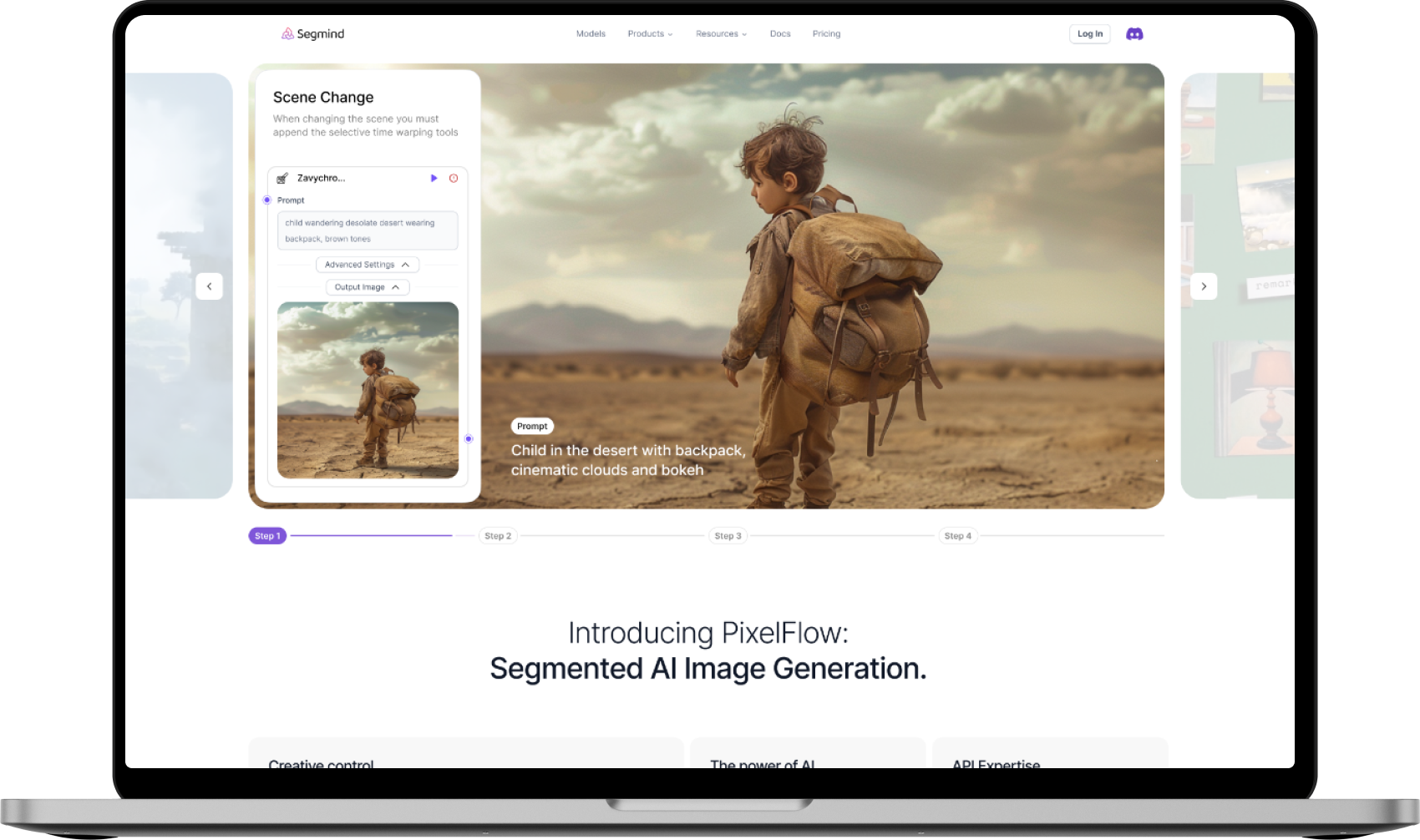API
If you're looking for an API, here is a sample code in NodeJS to help you out.
1
2
3
4
5
6
7
8
9
10
11
12
13
14
15
16
17
const axios = require('axios');
const api_key = "YOUR API KEY";
const url = "https://api.segmind.com/workflows/66cc6229c9734558783ada2a-v1";
const data = {
image_input: "publicly accessible image link",
text_prompt: "the user input string"
};
axios.post(url, data, {
headers: {
'x-api-key': api_key,
'Content-Type': 'application/json'
}
}).then((response) => {
console.log(response.data);
});1
2
3
4
5
{
"poll_url": "<base_url>/requests/<some_request_id>",
"request_id": "some_request_id",
"status": "QUEUED"
}You can poll the above link to get the status and output of your request.
1
2
3
{
"image_output": "image in URL Format"
}Attributes
To keep track of your credit usage, you can inspect the response headers of each API call. The x-remaining-credits property will indicate the number of remaining credits in your account. Ensure you monitor this value to avoid any disruptions in your API usage.
AI Interior Designer Using SDXL Canny ControlNet Model
This workflow helps you to visualize different Interior design of your room, enabling you to create unique and personalized spaces with remarkable ease.
The SDXL Canny ControlNet model is a powerful AI model specifically designed for detailed image manipulation and enhancement. By precisely identifying edges and contours within an image, the model allows for intricate design modifications, making it an invaluable resource for interior designers.
Workflow Overview
The AI-integrated interior design process involves several key stages, utilizing a structured approach ensures that the design output is both high-quality and consistent.
-
Stage 1: The process begins with the input of an image of the room to be redesigned. The initial photo is uploaded to the Input image node, setting the stage for detailed AI analysis and transformation.
-
Stage 2: The SDXL Canny ControlNet model performs an initial edge detection on the uploaded image. This step involves identifying key lines and contours within the scene, such as furniture edges, wall boundaries, and decor elements, creating a skeletal outline of the room.
-
Stage 3: You can select from a range of three predefined design styles or input custom prompts to guide the AI's transformation process. These prompts may include specific themes, furniture types, colour schemes, and other design elements.
-
Stage 4: Using the detected edges as a guide, the AI applies the chosen design elements to the image. This involves replacing furniture, adjusting colour schemes, and adding decor while maintaining the structural integrity of the room. The model ensures that changes respect the existing contours, resulting in a cohesive and realistic design.
Using the Template
-
Input your room image and hit the run button to generate outputs.
-
Optionally, you can also tweak the prompt to change the outputs to your liking.

